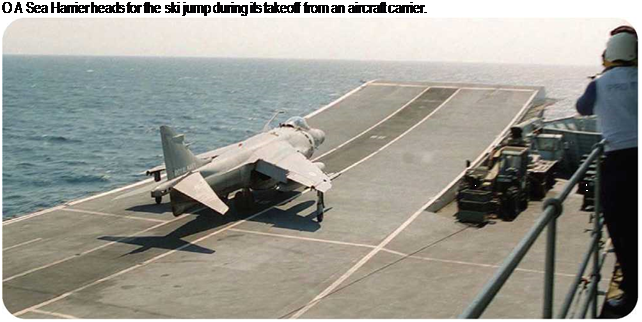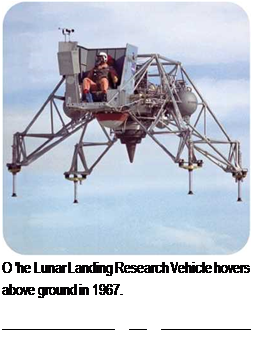Naval Service
The main advantage of a VTOL aircraft is that it does not need a runway, and so it can operate from any small patch of ground, from a road, or even a ship’s deck. One version of the Harrier, the Sea Harrier, was developed for naval use. It could operate from the smallest aircraft carriers. The decks of these ships are too short for most naval jets that require runways, but they are big enough for helicopters and VTOL aircraft.
A Sea Harrier with full fuel tanks and a large weapons load is too heavy to take off vertically, and the deck of a small aircraft carrier is too short to use a normal takeoff run. So small carriers are fitted with a ramp at the end of the deck, also known as a ski jump. As an aircraft accelerates toward the end of the deck, the ski jump gives it an extra push upward into the air.
 |
A Sea Harrier pilot has to calculate the aircraft’s takeoff speed very carefully by using its weight and the current wind speed. If takeoff is too slow, the plane might not get airborne. If it is too fast, the Sea Harrier might hit the ski jump too hard and damage its undercarriage. The Sea Harrier uses a short takeoff and vertical landing, making it a STOVL aircraft. It was the first operational STOVL combat aircraft to use vectored thrust.
 FLYING BEDSTEADS
FLYING BEDSTEADS
When NASA was preparing to send astronauts to the Moon in the 1960s, they developed a strange – looking aircraft to prepare astronauts for the task of landing on the lunar surface. The lunar lander, called the Apollo Lunar Excursion Module (LEM), would descend to the Moon balanced on the fiery jet of gas from a rocket engine. The first training vehicle for this event balanced on the jet exhaust from a jet engine instead of a rocket. Called the Lunar Landing Research Vehicle, it led to the development of three Lunar Landing Training Vehicles. Astronauts called them "flying bedsteads" because of their strange appearance.
When the U. S. Marines were looking for a light attack plane, they developed the Harrier to suit their needs. Their work resulted in a new Harrier, the AV – 8B Harrier II. It had bigger, thicker wings and was able to carry a bigger payload over a greater distance.










